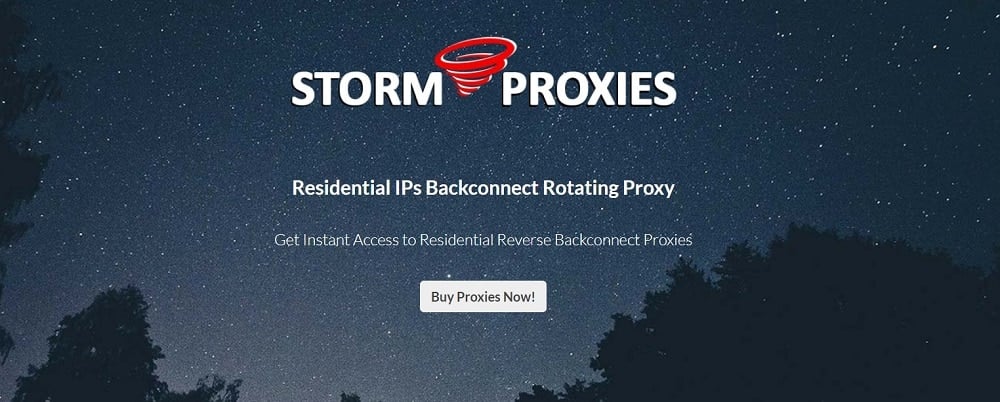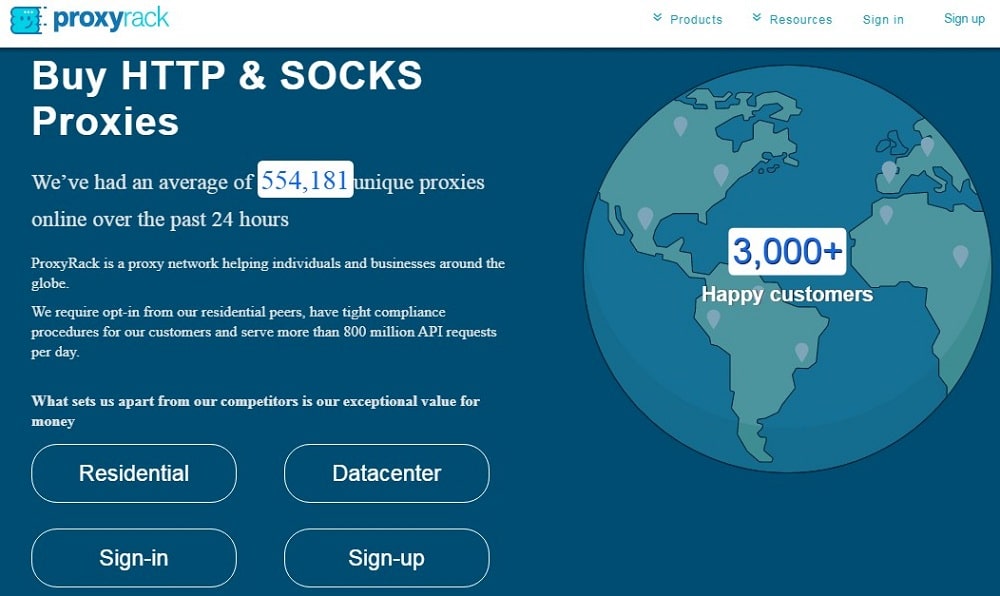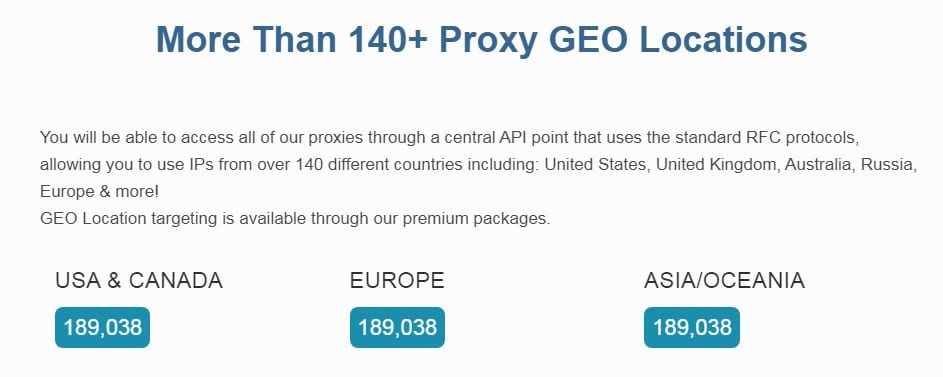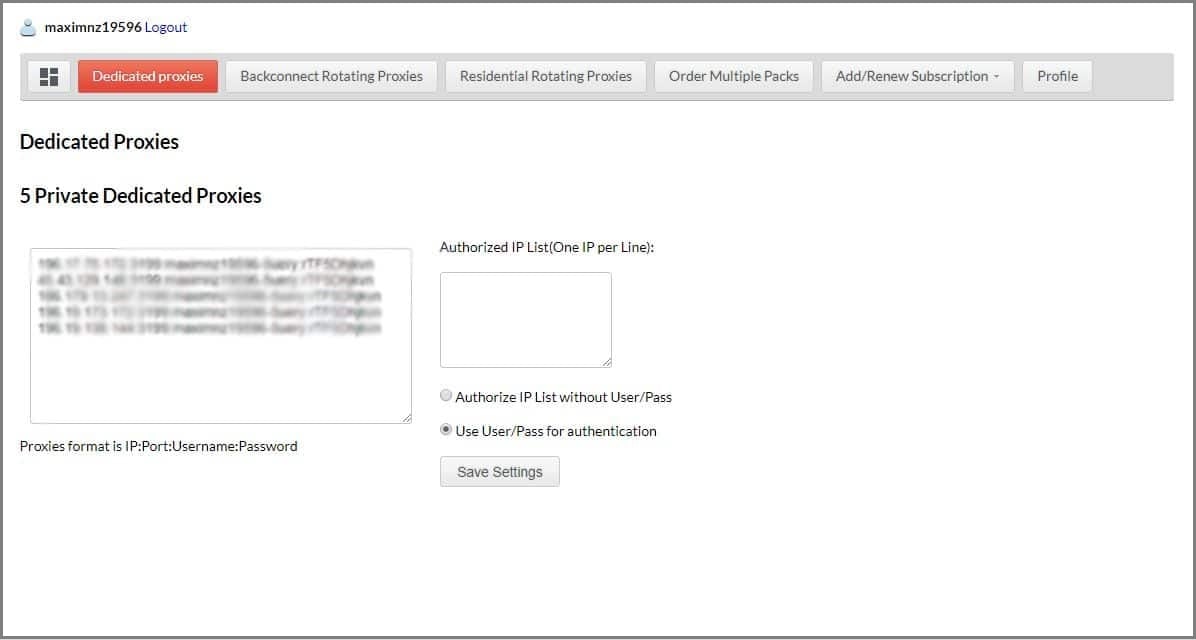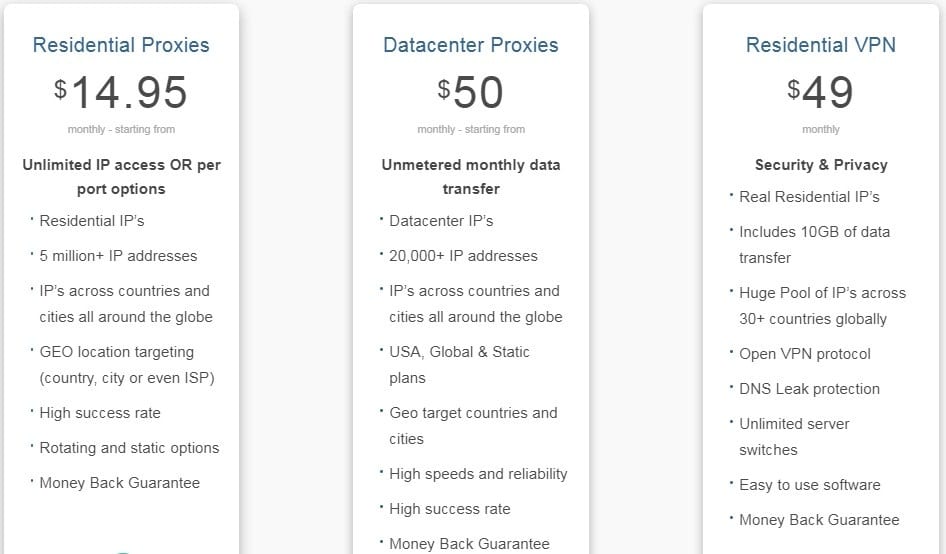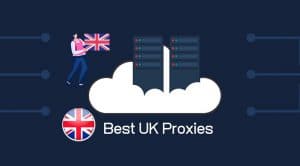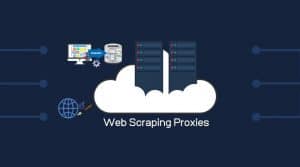Are you looking to make a choice between Shifter, Stormproxies, and Proxyrack? In the article below, we would be looking at the difference between the 3 residential proxy providers with unlimited bandwidth support.
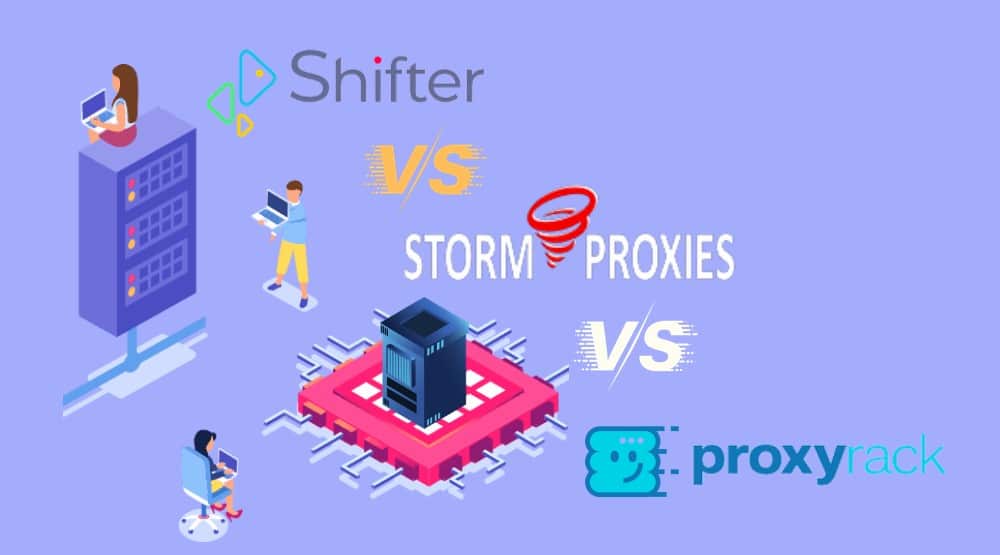
The majority of the proxies in the residential proxy market are priced based on consumable bandwidth and depending on the project, you require proxies for, you could exhaust the bandwidth in no time – and that would mean a disconnection until you pay again.
There is a small set of providers that allow users to enjoy unlimited bandwidth, which means that bandwidth is not metered, and your subscription remains active until the validity period elapses. The popular unmetered bandwidth residential proxy providers are Shifter, Stormproxies, and Proxyrack. We would be discussing the difference between the 3 providers.
At the end of the article, you should know how the 3 providers differ in the aspect of IP pool, pricing, performance, IP rotation, location coverage, and geo-targeting. We would also be providing you a final verdict on which provider to choose based on different criteria. This should help you make a better buying decision. Before going into the differences between the 3 in detail, let take a look at an overview of the 3 providers and a table to skim through.
Overview of Shifter, Stormproxies, and Proxyrack
The trio (Shifter, Stormproxies, and Proxyrack) made unlimited bandwidth usage possible in the residential proxy market – without these 3, you can only get that in the datacenter market.
Shifter has been the oldest provider among them and has been around for close to a decade now under a different brand known as Microleaves before rebranding into Shifter.io.
Stormproxies, on its part, is a cheap provider that focuses on the provision of specialized proxies for special use cases such as social media automation, sneaker copping, ticket scalping, and online gaming. Its features are quite basic and simple, but it proxies work.
For Proxyrack, it has a unique proposition whereby it allows users to enjoy not only unlimited bandwidth but also as many proxy endpoints as they want. All the 3 providers are backconnect proxies that rotate IP addresses they assign to users, and they all can be said to be affordable even though their pricing is not the same.
| Provider | Proxy Pool Size | Countries Supported | Geo-targeted Options | Request Success Rate | Minimum Package Pricing | IP Protocol Supported | High Rotating proxies | Session Proxies | Ease of Use |
| Shifter | 31+ million | 130+ countries | Country/ city | 86% | $249.99 for 10 ports | HTTPS + SOCKS | No | 5 min – 10 min | Easy |
| Stormproxies | 40K+ | US and EU only | Country (US and EU) | 70% | $50 for 5 ports | HTTPS | No | 5 min | Easiest to use |
| Proxyrack | 2+ million | 100+ countries | Country | 83% | $80 for 100 threads | HTTPS + SOCKS | Yes | Unspecified | Easy |
IP Pool Size and Source
One of the factors that residential proxy users look into is the number of IPs a provider has in its pool. This is important as having a small pool will means IP addresses would be repeated even when IP is rotated because the number of IPs is small.
Having a larger pool would mean more available IP addresses, and the chances of repeating IP are lower. Let take a look at the 3 providers in this regard.
In terms of proxy pool size, none of the 2 other providers comes close to Shifter .io. It has over 31 million IP addresses in its pool which does not only make it pool the largest among the 3 but also the largest in the proxy market.
In fact, if you look at the Shifter website, you will see that it claims to have the largest proxy pool in the market – while this is not true – it is one of the largest. Shifter does not own the IP addresses it uses – they are source via Peer-to-Peer (P2P) networks.
Stormproxies has the smallest proxy pool in all of the proxy services we have reviewed on this blog. If you look at the Stormproxies website, you will see that they have only 40K residential IP addresses. This is quite small and makes IP rotation inefficient.
In fact, even with their IP rotation, you should expect to only get less than 15 percent unique IPs when using their proxies. Stormproxies does not make public the source of their IP addresses, but we do suspect they are also from P2P networks.
Proxyrack has millions of IPs in its pool, but only 2 million IPs are part of the unmetered bandwidth plans. This is quite acceptable even though a large percent are not online at any given time – this is not peculiar to only Proxyrack; all other providers that depend on P2P networks, including Shifter, Bright Data, Smartproxy, are all in the same condition – even though they won’t tell you. Proxyrack provides information about available IPs.
Location Coverage and Geo-Targeting Support
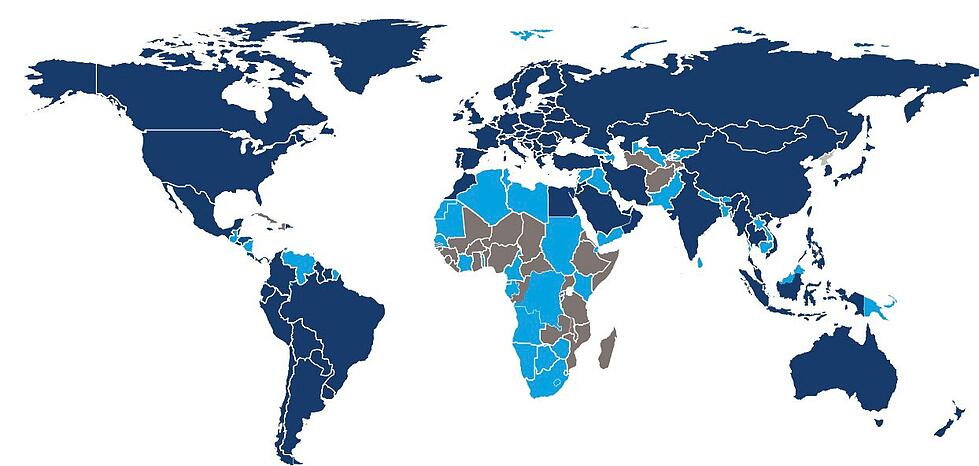
Location coverage is not the same for the 3 providers. In fact, there is a wide difference between the locations supported for each of the providers. As a proxy user looking forward to accessing geo-targeted content across locations, this is very important to you. Let take a look at the location support for the providers.
Again, just like in the case of IP pool size, Shifter takes the lead. Shifter has the best location coverage among the 3 providers. It has proxies in all of the countries around the world and many cities. If you go for their special proxy plans, you can choose to use proxies from any of the countries in the world— a feature known as country-level geo-targeting.
Another area that Stormproxies flops is in the area of locations supported. I must confess, they are the worse in this regard, not only among the 3 providers but also among all of the proxies we have reviewed in the past. Stormproxies only have support for the US and EU. If you need proxies for other locations, then Stormproxies is not the provider for you.
From Proxyrack, you can get IP addresses from North American countries (the US and Canada), Europe, Asia, and Oceania. For the locations supported, they equally have support for geo-targeting. In terms of location coverage, Proxyrack takes the second position.
Performance (Speed, Scalability, Reliability, and Stability)

How well does each of the providers perform in the area of speed, scalability, reliability, and stability? The answers to this question vary from provider to provider, but the bottom line is we were not impressed with the overall result – some are quite acceptable, though.
To be frank with you, Shifter proxies work provided you do not overload it with requests. The speed can be termed as average, and you won’t notice much delay. However, this is only true if you do not send too many requests concurrently. If you do so, you will experience a slower speed, and the level of success requests will drop. If you do not want to deal with too many connection errors using Shifter, then you will have to minimize the number of concurrent requests. Aside from the scalability issues, Shifter can be said to be reliable and stable.
Stormproxies is powered with low-powered infrastructures, and as such, you shouldn’t expect anything impressing in terms of performance. In terms of speed, Stormproxies' average response time is 2.66 seconds which makes it one of the slowest residential services in the market. What about the success rate of requests? It performs poorly as its success rate is around 70 percent, with the remaining 30 percent either HTTP 502 error, SSL error, or unknown error. Another problem related to performance is that even though IP rotation is supported, unique IPs are put at the barest minimum.
Proxyrack does not do anything different from the other providers either. It can be termed as an average provider, just like Shifter. However, unlike the other providers that we could send as many requests as we wish to put their scalability to test, as the number of threads you can create is quite limited. Even with that, we can see that as you increase the number of requests, the performance in terms of speed and success rate decreased.
IP Rotation System and Session Management

Which of the 3 providers is the best in terms of IP rotation and session management? You need to know that all of the providers are rotating proxies, and as such, you should not expect to keep the same IP address over a long period of time. However, how often the IP can be changed or retained is quite important. Generally, to maintain a session, you will need to keep the same IP address.
Shifter IP rotation system is time-based. You cannot get high rotating proxies that change IP addresses after every request from Shifter. You will have to maintain an IP address for a minimum of 5 minutes before it can be changed. However, if you have the need to maintain the same IP address, you could keep it for 10 minutes.
Stormproxies is the same as Shifter in the aspect of IP rotation. They also do not have support for high rotating proxies. IP rotation is time-based and done every 5 minutes for each of the proxy endpoints in the pool.
In terms of IP rotation, Proxyrack takes the lead. It has support for both high rotating proxies and sticky ports that rotate IP based on timing. If what you need proxies from requires you to switch IP after every request, then Proxyrack is a good provider for you. Interestingly, if you need to maintain a session for a while, it is also equal to the task.
IP Protocol Support and Authentication Support
There are many IP protocols, but for proxies, the popular ones are the HTTPS and SOCKS5 – and not all proxies support them even though it is quite important to do so in other to be versatile and usable in all software. Another aspect these 3 providers differ in is the area of authentication method supported.
-
Shifter and Proxyrack
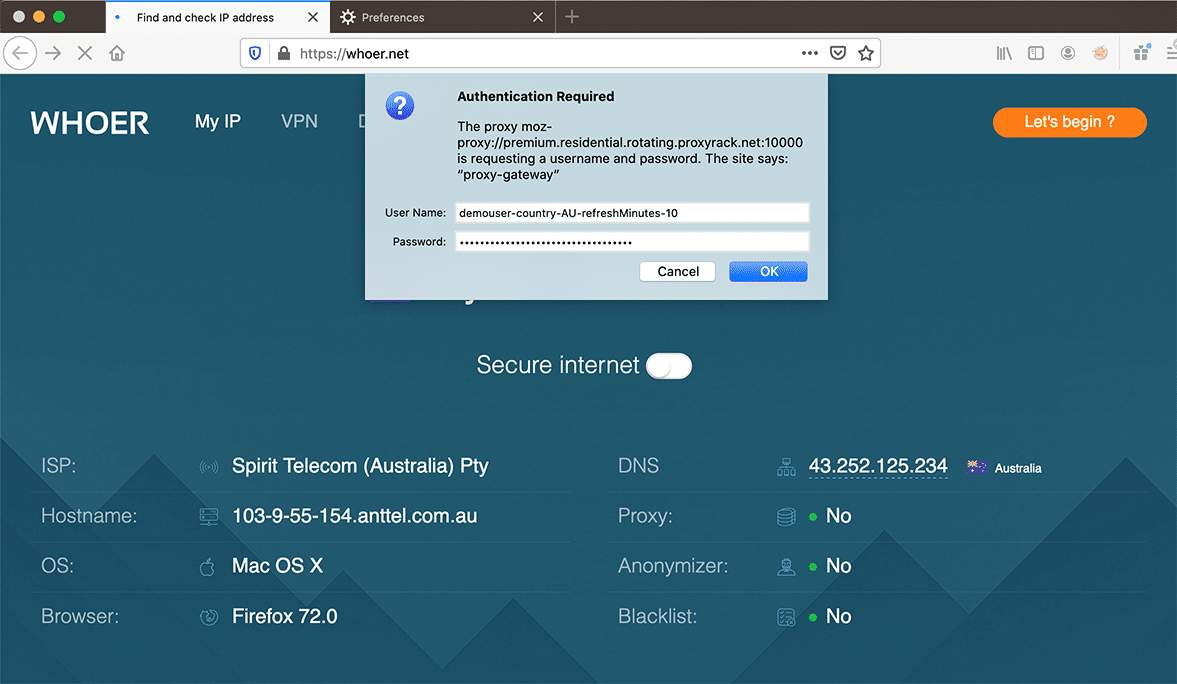
Shifter and Proxyrack have support for both HTTP/S protocols as well SOCKS protocols. This makes them compatible with all automation software and makes them useful in a good number of use cases. In terms of authentication, they both support username and password authentication as well as IP authentication.
Stormproxies only have support for HTTPS proxies or the HTTPS protocol. If you are looking for SOCKS proxies, then you will need to look elsewhere as they do not provide them. Also, they do not offer username and password authentication. The only authentication method supported is IP authentication, and it takes up to 30 minutes for a whitelisted IP to take effect.
Pricing – Including Free Trials and Refund Policy
Pricing is one of the things that differentiate Shifter, Stormproxies, and Proxyrack. Interestingly, it is one of the major reasons you will leave one for another. Except you have a big budget for proxies, pricing will always be one of the most important factors that will influence your buying decision. Let take a look at how each of them stands.
From the above, you already know that Shifter Shifter is the best among the 3 in terms of performance, and that comes with a price; it is the most expensive among the 3. The smallest plan is sold for $249.99 and comes with 10 ports – you get to enjoy unlimited bandwidth. Shifter does not provide a free trial. However, all sales are not final, and you can request a refund within 3 days of making payment.
If you take a look at the Stormproxies website and look at their pricing, you will come to the conclusion that they are meant for small proxy users. With $50, you can get 5 ports to use, and this also comes with unlimited bandwidth. Interestingly, if you do not have $50, you could pay $19 and get one port. Stormproxies also does not offer free trials. You will have to subscribe to their small plan if you need to test their proxies as that’s the only plan that comes with a money-back guarantee – and it is only for 24 hours.
In terms of pricing, Proxyrack can be said to be in the middle; it is neither too cheap nor expensive for the small marketer. The pricing for Proxyrack is based on the number of threads, and you can enjoy both unlimited bandwidth and ports. The smallest plan is sold for $80 and allows up to 100 threads. Proxyrack also does not have a free trial, but they do have a refund policy for new customers.
Our Verdict
Looking at the differences between Shifter, Stormproxies, and Proxyrack, you can tell that overall, we have a winner, and that’s Shifter even though it is not quite the best when paired with other premium providers like Smartproxy and Bright Data. It performs well if you do not send too many requests at a time, has good location coverage, and a large IP size.
However, it can be said to be expensive for small-scale proxy users. The next alternative to it is Proxyrack. However, if you still can’t afford that, then you will have to settle with Stormproxies for unlimited bandwidth. Unfortunately, that would only be possible if you only need US or EU proxies, do not mind the performance problems, and do not need SOCKS proxies as they do not offer them.


